Iranian and Indian peoples have interacted for thousands of years but a syncretic Turco-Persian and Indian culture held sway in the subcontinent from the medieval age until the arrival of the British
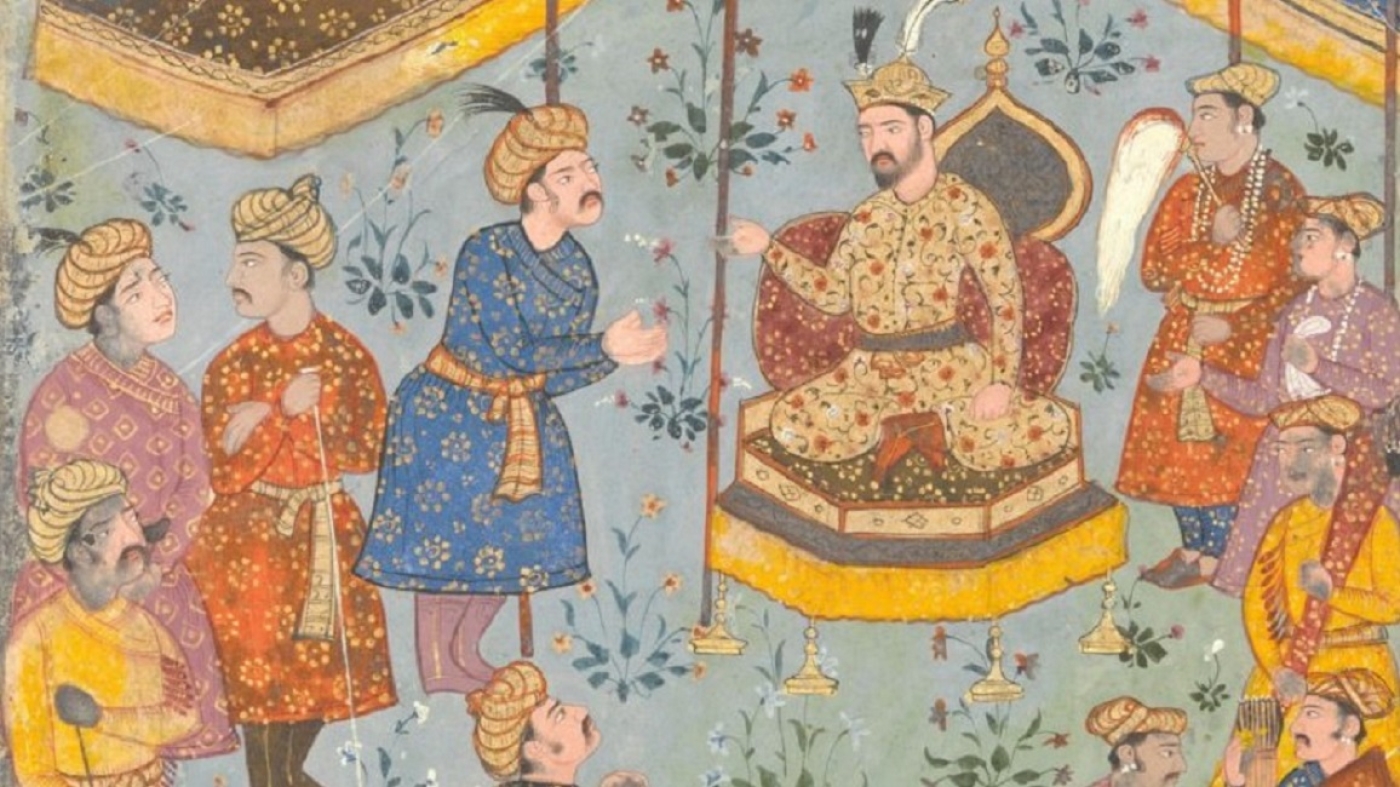
A Mughal prince (seated) receives a Persian delegation in this 17th century Indian miniature (Public domain)
By Shahinda Syed
30 May 2022
For a native Sanskrit speaker meeting an Avestan speaker around 3,500 years ago, basic communication might have been challenging. Yet there was enough common ground between the languages to at least get basic ideas across.
The Sanskrit word naman, meaning “name”, was an exact cognate of the Avestan naman, while the latter would also have recognised the Sanskrit pitr and matr, meaning father and mother, which were patar and matar in Avestan.
Where they would have likely caused offence to one another was on the subject of religion; the Sanskrit word for heavenly being, or deva, had the meaning of “devil” in its Avestan form, perhaps hinting at religious rivalries among two peoples related by common linguistic and ethnic ancestry.
Orientalism, exoticism, deception: The story of the Arabian NightsRead More »
The two languages are part of the Indo-Iranian language family, which split into two branches around 4,000 to 5,000 years ago; the Iranian branch, to which Avestan belonged, and the Indo-Aryan, to which Sanskrit belongs.
Today, Avestan survives only as a liturgical language used among Zoroastrians, but its influence is still felt among surviving modern-day Iranian languages, such as Persian.
While Persian is not directly descended from Avestan, it took on the language’s role as the main linguistic medium of the Iranian peoples, first under the Persian empires of the Ancient World, such as the Achaemenid, and then as the lingua-franca of the multi-ethnic Muslim empires that ruled much of the Middle East, Central Asia and South Asia.
For hundreds of years in the early modern age, an Iranian language, Persian, was the dominant medium of communication for Hindu bureaucrats in the Mughal court as it was in Safavid Iran itself, typifying a millennia-old relationship between the Iranian and Indic worlds.
The language would remain dominant among India’s elites, alongside Sanskrit-descended languages, such as Urdu and Hindi, until British colonisation of the subcontinent.
As late as the birth of Pakistan and India, however, many South Asian Muslim intellectuals remained fluent in Persian, and some, such as Pakistan’s national poet Muhammad Iqbal, produced influential literary works in the language.
“Both (Persian and Sanskrit) were grounded in a prestige language and literature that conferred elite status on its users,” writes Richard Eaton, author of the book India in the Persianate Age: 1000- 1765.
He continues: “Both articulated a model of worldly power - specifically, universal dominion. And while both elaborated, discussed and critiqued religious traditions, neither was grounded in a religion, but rather transcended the claims of any of them."
Great empires
The western portion of the Indian subcontinent, along the River Indus, was an integral part of the first Persian Empire.
Under Cyrus the Great, the founder of the vast Achaemenid Empire, the Persians conquered parts of the northern Indian subcontinent, roughly corresponding to modern-day Pakistan.
While it was the military might of the Achaemenids that kept subject peoples in their place, Persian rule was not based purely on the threat of force.

Indian soldiers of the Persian Army are depicted on the 4th century BCE tomb of the Achaemenid emperor, Artaxerxes II, at Persopolis in Iran
(Wikmedia/Bruce Allardice)
Evidence of cordial relations between Indian aristocrats and Persian rulers is evident in the gifts the former sent to the latter, as well as mention of Indian peoples in inscriptions on sculptures found within other Persian-ruled territories.
After Alexander the Great ended the Achaemenid Empire, the Macedonian Seleucids, Iranian Parthians and the neo-Persian Sasanians ruled territories that were centred in old Achaemenid heartlands and included much of its territory, including northwestern India.
In the seventh century, Arab Muslims defeated the Sasanians in a manner no less dramatic than Alexander had done to their Persian predecessors a millennium earlier.
The rise of Islam was to have a significant effect on Persian-Indian relations but in two drastically different ways.
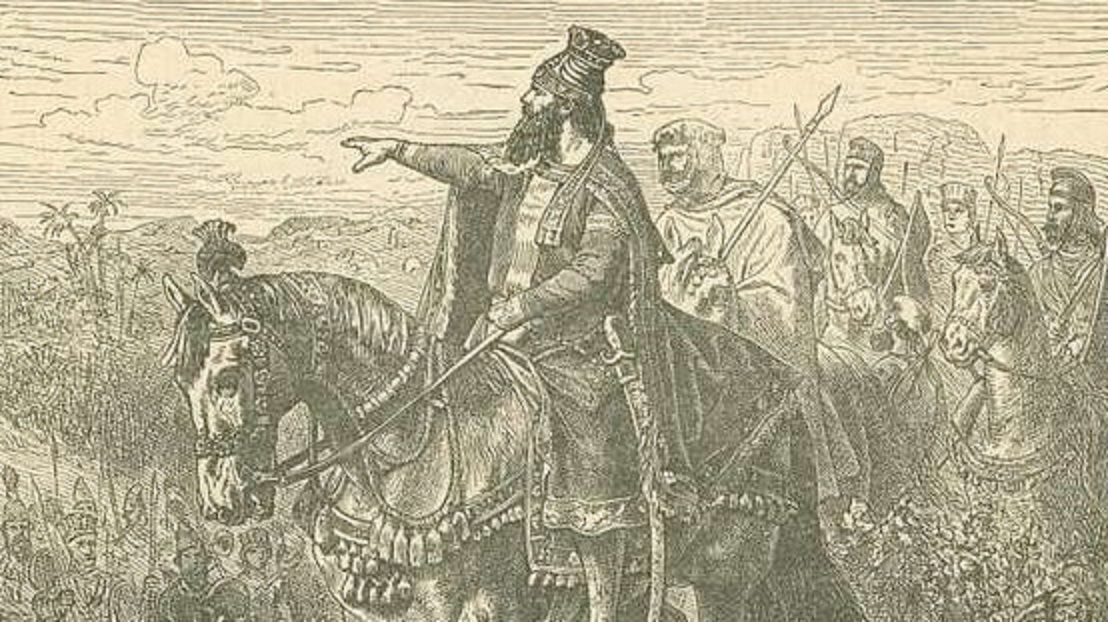
Evidence of cordial relations between Indian aristocrats and Persian rulers is evident in the gifts the former sent to the latter, as well as mention of Indian peoples in inscriptions on sculptures found within other Persian-ruled territories.
After Alexander the Great ended the Achaemenid Empire, the Macedonian Seleucids, Iranian Parthians and the neo-Persian Sasanians ruled territories that were centred in old Achaemenid heartlands and included much of its territory, including northwestern India.
In the seventh century, Arab Muslims defeated the Sasanians in a manner no less dramatic than Alexander had done to their Persian predecessors a millennium earlier.
The rise of Islam was to have a significant effect on Persian-Indian relations but in two drastically different ways.

A 19th century depiction of the Achaemenid king and founder, Cyrus the Great, by the German artist Wilhelm Camphausen (Public domain)
After the Arab Muslim conquest, a large number of Zoroastrians fled Iran to India due to fear of persecution, settling in regions, such as Gujarat, and came to be known as Parsis.
Given the small size of the community historically and their cultural importance, with the exception of their Zoroastrian faith, most Parsis no longer speak Iranian languages and are largely assimilated into wider Indian culture, linguistically and culturally.
The second wave of Persian influence comes from Persian-speaking Muslims, mainly Turkic and Iranian dynasties, who established a synthesis of Persian, Islamic and South Asian cultures, which continues to be reflected in the modern-day culture of South Asia.
The meeting of Indian, Persian and Turkic culture
The Persian-inspired culture that developed in South Asia during the medieval period, was itself a descendant of the Turco-Persian culture that developed in Central Asia.
As nomadic Turkic warriors converted to Islam and settled in mainly Persian-speaking areas, they gradually took on elements of their subjects’ culture, including their fashions, artistic styles and language.
The syncretic culture formed from this meeting of the Turkic and Persian worlds would then find its way south with subsequent Muslim invasions.
After the Arab Muslim conquest, a large number of Zoroastrians fled Iran to India due to fear of persecution, settling in regions, such as Gujarat, and came to be known as Parsis.
Given the small size of the community historically and their cultural importance, with the exception of their Zoroastrian faith, most Parsis no longer speak Iranian languages and are largely assimilated into wider Indian culture, linguistically and culturally.
The second wave of Persian influence comes from Persian-speaking Muslims, mainly Turkic and Iranian dynasties, who established a synthesis of Persian, Islamic and South Asian cultures, which continues to be reflected in the modern-day culture of South Asia.
The meeting of Indian, Persian and Turkic culture
The Persian-inspired culture that developed in South Asia during the medieval period, was itself a descendant of the Turco-Persian culture that developed in Central Asia.
As nomadic Turkic warriors converted to Islam and settled in mainly Persian-speaking areas, they gradually took on elements of their subjects’ culture, including their fashions, artistic styles and language.
The syncretic culture formed from this meeting of the Turkic and Persian worlds would then find its way south with subsequent Muslim invasions.
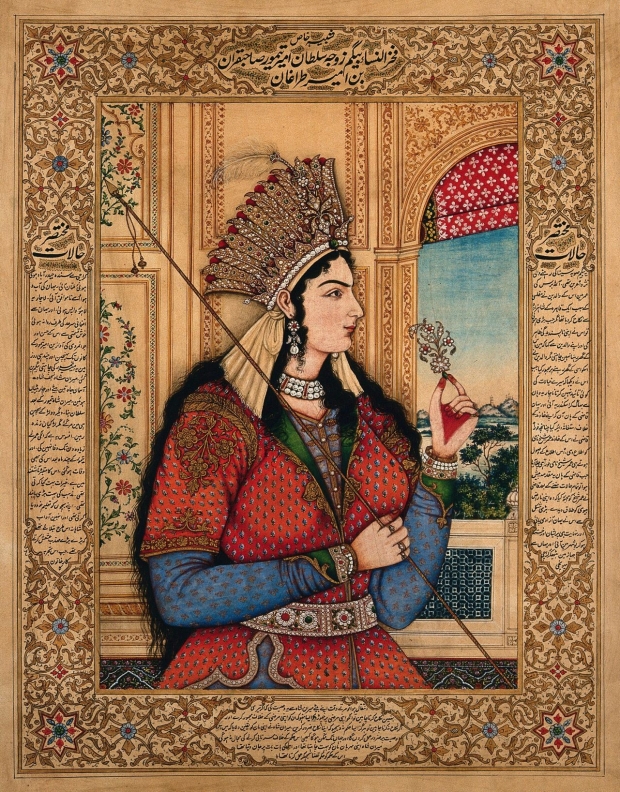
A late Mughal miniature illustrates the influence of Persian artistic styles in India
(Public domain)
A successful conquest of northern India by Mahmud of Ghazni, the 11th-century Turkic warrior and founder of the Ghaznavid dynasty, was an early catalyst for Persian cultural influence in South Asia.
Persian culture was patronised under the Ghaznavids, as well as succeeding empires, such as the Ghurids and Mamluks.
Under the Khilji, Tuglak, Sayyid and Lodhi dynasties, Persian was the official language and the main medium of Muslim India’s artistic culture.
According to Encyclopaedia Iranica: “After the foundation of the Delhi Sultanate in 1206, the munificence of its rulers attracted many poets and scholars from Persia and Central Asia. Persian literary trends were thus assimilated and refashioned in the complex and intricately multi-layered cultural milieu of India.”
When the Persian- and Turkic-speaking Timurid prince, Babur, invaded India in the 16th century, establishing the Mughal Empire, he encountered a culture already deeply Persianised that had already produced famed Persian language poets, such as Amir Khusrau.
Indo-Persian culture reached its zenith under Babur’s Mughal descendants, producing architectural masterpieces, such as the Taj Mahal in Agra and New Delhi’s Jama Masjid, among other great architectural achievements across the subcontinent.
Equally important were culinary introductions to the subcontinent, including Mughal dishes, such as biryani, nihari and various styles of kebab.
Linguistically too, the Urdu language developed out of the meeting of old Sanskrit-descended Hindi dialects and the Persian spoken in the Mughal court.
A successful conquest of northern India by Mahmud of Ghazni, the 11th-century Turkic warrior and founder of the Ghaznavid dynasty, was an early catalyst for Persian cultural influence in South Asia.
Persian culture was patronised under the Ghaznavids, as well as succeeding empires, such as the Ghurids and Mamluks.
Under the Khilji, Tuglak, Sayyid and Lodhi dynasties, Persian was the official language and the main medium of Muslim India’s artistic culture.
According to Encyclopaedia Iranica: “After the foundation of the Delhi Sultanate in 1206, the munificence of its rulers attracted many poets and scholars from Persia and Central Asia. Persian literary trends were thus assimilated and refashioned in the complex and intricately multi-layered cultural milieu of India.”
When the Persian- and Turkic-speaking Timurid prince, Babur, invaded India in the 16th century, establishing the Mughal Empire, he encountered a culture already deeply Persianised that had already produced famed Persian language poets, such as Amir Khusrau.
Indo-Persian culture reached its zenith under Babur’s Mughal descendants, producing architectural masterpieces, such as the Taj Mahal in Agra and New Delhi’s Jama Masjid, among other great architectural achievements across the subcontinent.
Equally important were culinary introductions to the subcontinent, including Mughal dishes, such as biryani, nihari and various styles of kebab.
Linguistically too, the Urdu language developed out of the meeting of old Sanskrit-descended Hindi dialects and the Persian spoken in the Mughal court.
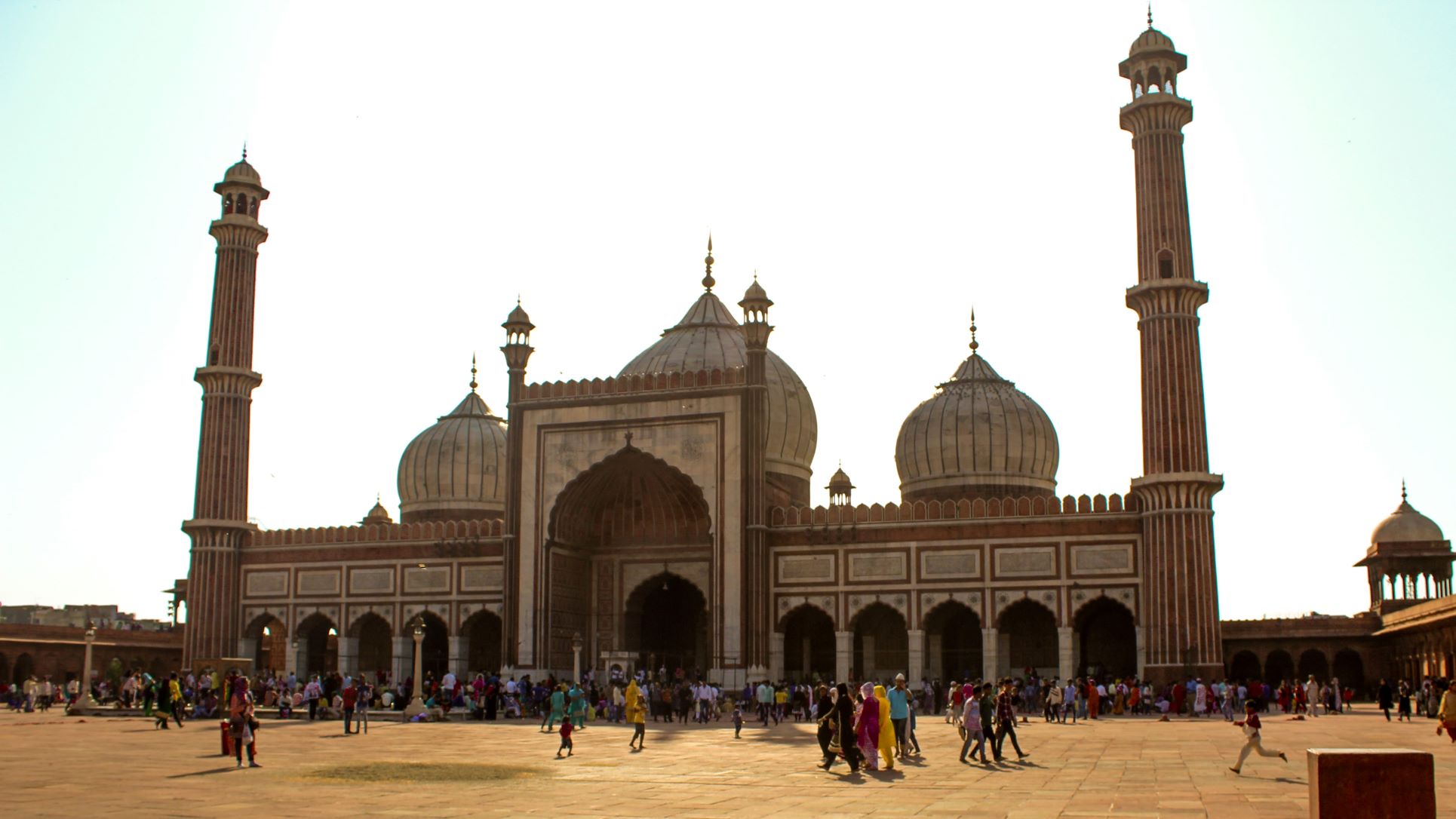
Commissioned by the Mughal emperor Shah Jahan, Delhi's Jama Masjid combines Persian, Arab and local Indian architectural styles
(MEE/Shahinda Syed)
The abundance of miniature paintings produced during the Mughal period is another testament to Persian influence within South Asia, as are the volumes of printed works written in Persian during Mughal rule.
The 20th-century Iranian historian Ehsan Yarshater wrote: “Persian poetry, its ideas, images and conventions, set the model for the poets in the eastern lands of Islam irrespective of the language in which they wrote.
“Thus when in the 16th century, the eastern non-Arab societies of the Islamic world were articulated in three great empires, the Ottoman, Safavid and the Mughal, their literary culture was founded on the Persian model.”
The abundance of miniature paintings produced during the Mughal period is another testament to Persian influence within South Asia, as are the volumes of printed works written in Persian during Mughal rule.
The 20th-century Iranian historian Ehsan Yarshater wrote: “Persian poetry, its ideas, images and conventions, set the model for the poets in the eastern lands of Islam irrespective of the language in which they wrote.
“Thus when in the 16th century, the eastern non-Arab societies of the Islamic world were articulated in three great empires, the Ottoman, Safavid and the Mughal, their literary culture was founded on the Persian model.”
The demise of Persian in India
The fall of Persian is linked directly to the demise of the Mughal Empire and the correlated ascendancy of British rule in the subcontinent.
Initially the British East India Company utilised Persian in its formal operations and the language continued to serve its traditional role as the language of bureaucracy.
In the early 1800s, Persian language training was still a key part of education for British officers stationed in India.
But such early accommodations of the Indo-Persian culture were a subject of debate among British officials.
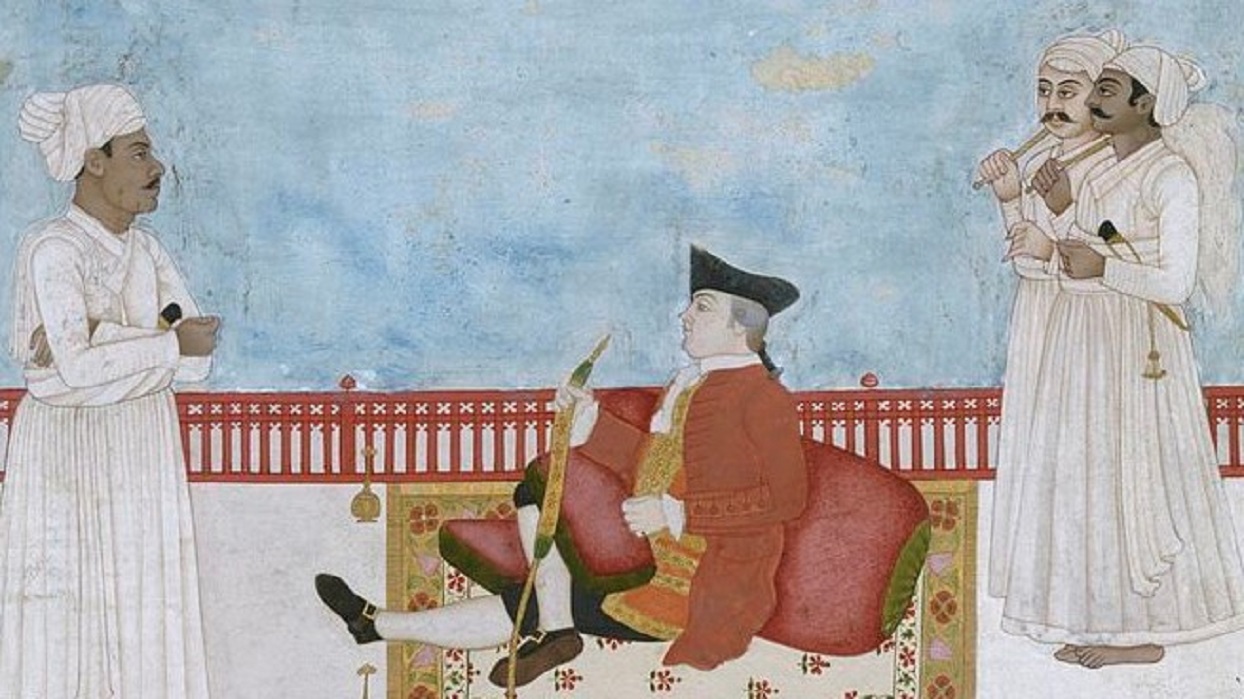
An 18th century depiction of a British officer in India, until 1832 East India Company officials were trained in the Persian language (Public domain)
According to Tabreez Ahmed, a scholar of Islamic history and culture based in New Delhi, there was a faction that wanted to preserve “oriental” customs, while another was motivated to preserve the use of Persian as long as it was useful to do so.
In the end it was the utilitarians who won. When British dominance was firmly established in India, Persian fell out of use in favour of English and in 1832, its use for official purposes was banned.
“Persian or any other oriental language meant nothing and there was no point teaching or educating people in Persian as this would not benefit the British East India Company at all,” Ahmed says.
British influence also had another impact on the use of Persian in religious contexts.
The encroachment of European powers into what were traditionally lands ruled by Muslims set off a wave of self-reflection within the Islamic world, which led to the birth of revivalist movements.
In South Asia, this most prominently took the form of the Deobandi school of Sunni thought.
In its attempts to rid Islam of outside influences, Deobandi scholars placed a greater emphasis on approaching the original sacred texts of Islam in their Arabic originals rather than on the Persian-language commentaries that had dominated Islamic scholarship in South Asia until the early 19th century.
While Persian commentaries continue to be studied in Deobandi institutions, Arabic is today the primary focus of study.
According to Tabreez Ahmed, a scholar of Islamic history and culture based in New Delhi, there was a faction that wanted to preserve “oriental” customs, while another was motivated to preserve the use of Persian as long as it was useful to do so.
In the end it was the utilitarians who won. When British dominance was firmly established in India, Persian fell out of use in favour of English and in 1832, its use for official purposes was banned.
“Persian or any other oriental language meant nothing and there was no point teaching or educating people in Persian as this would not benefit the British East India Company at all,” Ahmed says.
British influence also had another impact on the use of Persian in religious contexts.
The encroachment of European powers into what were traditionally lands ruled by Muslims set off a wave of self-reflection within the Islamic world, which led to the birth of revivalist movements.
In South Asia, this most prominently took the form of the Deobandi school of Sunni thought.
In its attempts to rid Islam of outside influences, Deobandi scholars placed a greater emphasis on approaching the original sacred texts of Islam in their Arabic originals rather than on the Persian-language commentaries that had dominated Islamic scholarship in South Asia until the early 19th century.
While Persian commentaries continue to be studied in Deobandi institutions, Arabic is today the primary focus of study.
Residual influence
British policies set the groundwork for Persian’s eventual demise in India but the language continued to inspire the region’s artists and poets.
“Persian language, literature and culture had penetrated so deep (in South Asia) that it was impossible to wipe out,” said Dr Abdul Halim, head of the Persian department at New Delhi’s Jamia Millia Islamia university.
“The presence of great thinkers, poets and philosophers after 1835, like (Mirza) Ghalib, (Muhammad) Iqbal and many others, itself testifies to the fact that Persian language and culture never lost its battle on the ground.”
For Halim, no history of India can be compiled without a knowledge of Persian, and the academic argues that a revival of the language would help Indians and other South Asians better understand their past.
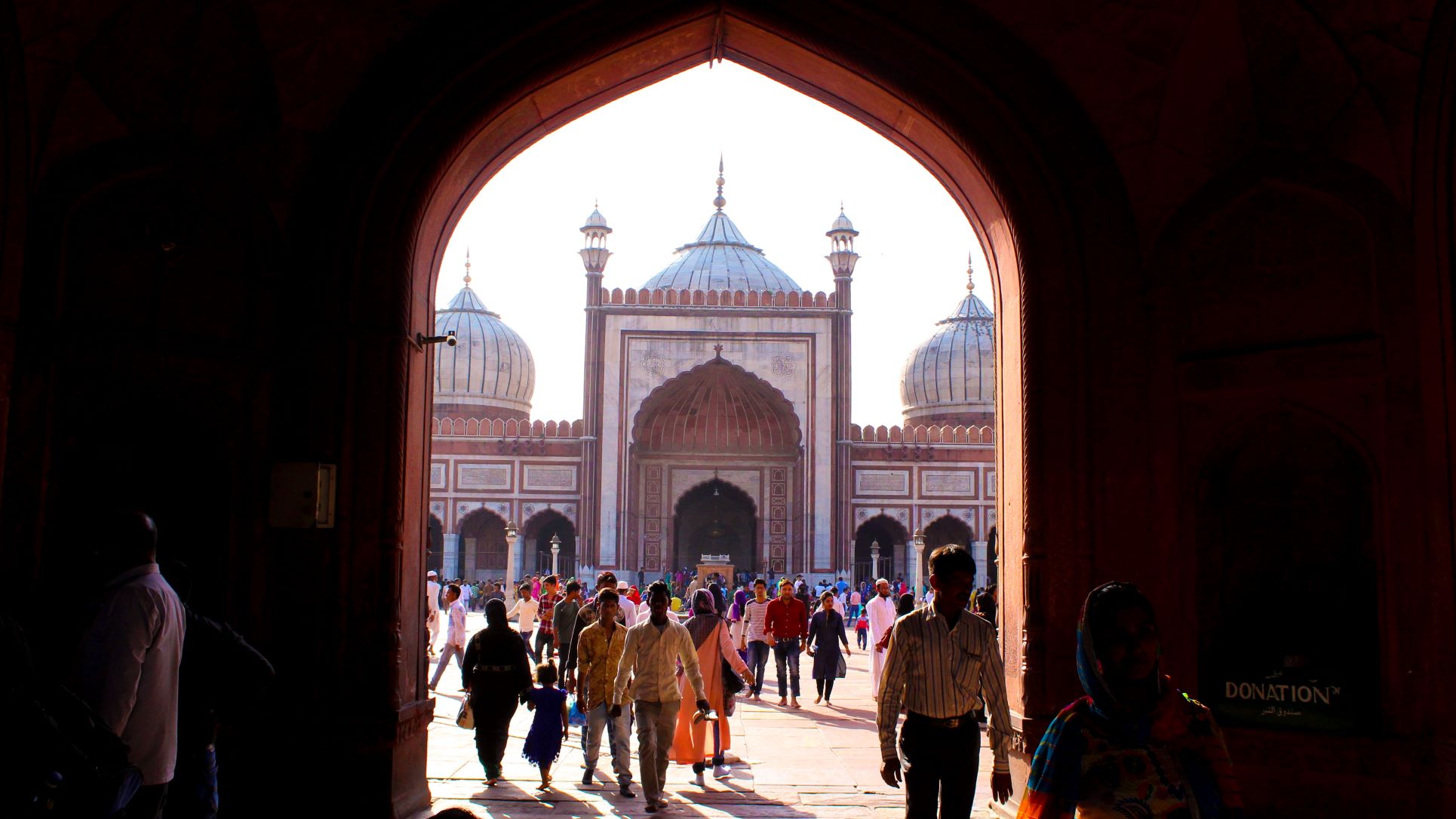
The legacy of Persian's historic use in India is evidenced by the number of Persian loan words in Indian languages
(MEE/Shahinda Syed)
“We need to revive Persian language and literature so as to get access to the treasure trove of Persian manuscripts, which are full of information, facts and figures related to the socio-political, historical and economic condition of our vast land,” he said.
As things stood, Halim warned, most Indo-Persian manuscripts lay in libraries, museums and archives “unattended”.
For most South Asians, the influence of Persian culture on their everyday life is unavoidable, whether that is in the buildings that surround them, the food they eat, or the words they speak.
Despite contemporary efforts by Hindu nationalists to rid languages like Hindi of foreign influences, hundreds of years of rule by Persian speakers means almost every Indo-Aryan language has a significant contribution of Persian words to their lexicon.
Commonly used words, such as asman (sky), darya (sea), zameen (earth/ground), bazaar (market) and darvaza (door), found their way into South Asian languages through Persian.
Just as the hypothetical Sanskrit speaker 3,500 years ago would have been able to find some common ground with an Iranian speaking Avestan, a modern Iranian or Tajik traveller in Lahore or New Delhi will come across plenty of familiar sights and sounds.
“We need to revive Persian language and literature so as to get access to the treasure trove of Persian manuscripts, which are full of information, facts and figures related to the socio-political, historical and economic condition of our vast land,” he said.
As things stood, Halim warned, most Indo-Persian manuscripts lay in libraries, museums and archives “unattended”.
For most South Asians, the influence of Persian culture on their everyday life is unavoidable, whether that is in the buildings that surround them, the food they eat, or the words they speak.
Despite contemporary efforts by Hindu nationalists to rid languages like Hindi of foreign influences, hundreds of years of rule by Persian speakers means almost every Indo-Aryan language has a significant contribution of Persian words to their lexicon.
Commonly used words, such as asman (sky), darya (sea), zameen (earth/ground), bazaar (market) and darvaza (door), found their way into South Asian languages through Persian.
Just as the hypothetical Sanskrit speaker 3,500 years ago would have been able to find some common ground with an Iranian speaking Avestan, a modern Iranian or Tajik traveller in Lahore or New Delhi will come across plenty of familiar sights and sounds.
No comments:
Post a Comment